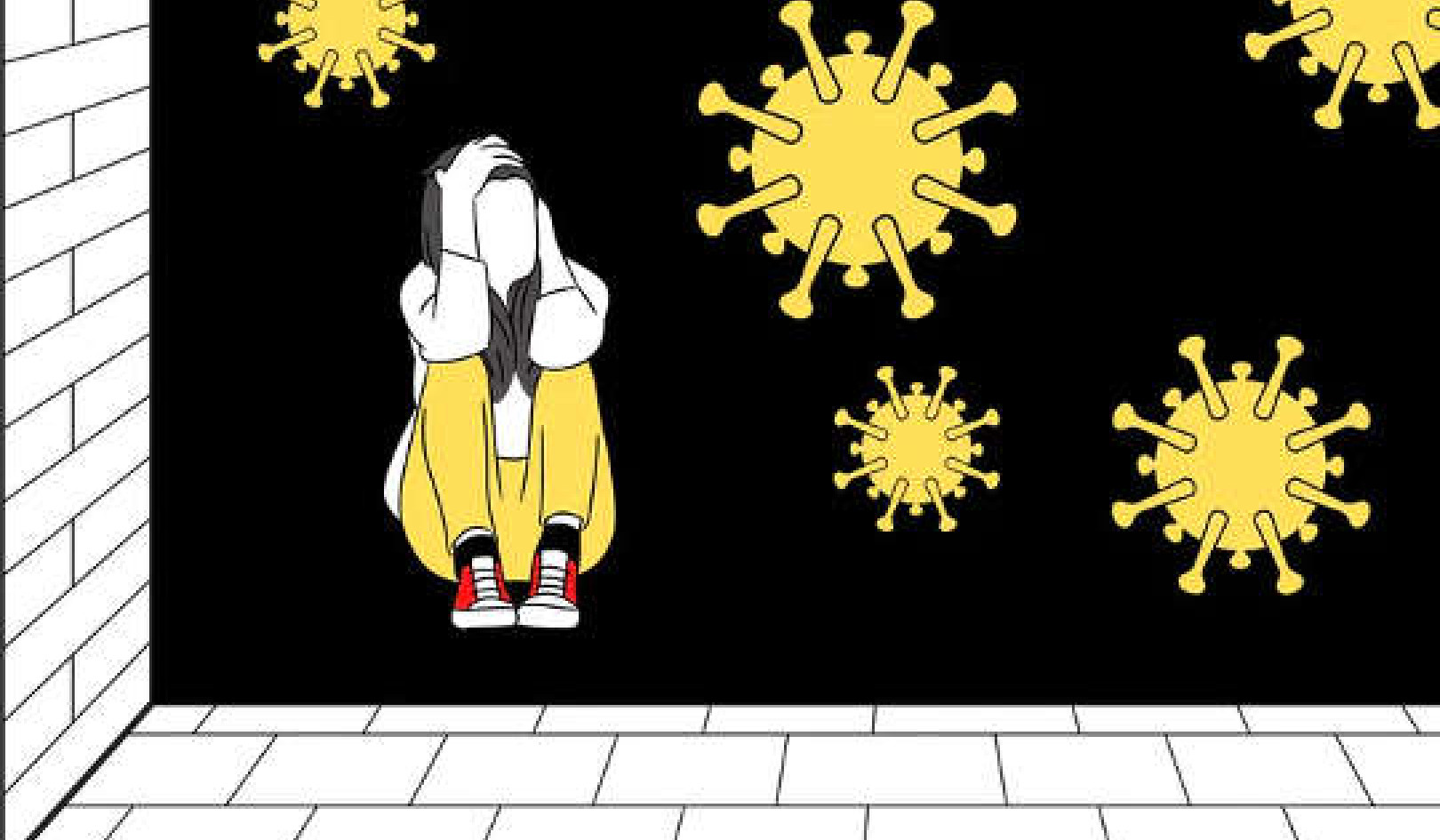 Image Credits: Michael Drummond, Digital Film Strip (CC0 1.0)
Image Credits: Michael Drummond, Digital Film Strip (CC0 1.0)
The content of your life seems to flow seamlessly but it’s really more of a succession of still frames, like a movie. Film moves through the projector and displays as a coherent whole, but we know that it is actually a series of distinct, still frames. When you stop the motion and freeze the frame, the movie becomes a slide show.
Similarly, our lives are a series of “moments” that flow together. We tend to extract one frame here, another one there, and fabricate stories about them. Good ones are called “show stoppers.” Someone may suddenly take issue with something that is happening and... the brakes go on. Suddenly, there’s a story to process. “Why did you say that to me? What did you mean by that?” Or, “that reminds me of the time ...”
One Story Breeds Another
Stories breed with each other. One triggers another. Whatever is said activates something in your database of stories, unconsciously reminding you of something else so an old story is re-told or a new one created.
Most people live like this, from story to story 24/7. But what would you be ... who would you be, without all those stories? What would it be like to simply enjoy truthful, positive conversation mingled with silence? Might a truthful perception of reality begin to show itself? Yes, that’s exactly how it happens.
Consider your life with its many details and say to yourself, “If I let all of this go, who would I be?” This form is impermanent; all content is impermanent. At some point you will have to let it all go. What if you consciously let it go now, before physical death forces you to? “What could I experience, who would I be, without all this content?”
Compassionately Allowing Others Their Suffering
I was watching a news story recently about prostitutes in Las Vegas. One after another they described their suffering, the misery and drama of their lives. I expect that most viewers were judging this as horrible, maybe condemning these women, maybe feeling sorry for them. But from a holistic perspective this was the experience that was valid for them. This is where their feet were at the moment.
Can you allow others their suffering? Of course, you extend compassion, but the most compassionate awareness is to allow others the fullness of their own experience. It is up to them to make a move out of it.
The moment they choose something different that becomes the next experience whose time has come for them. None of us are in any position to rush that moment for anyone, based on some assumed superior wisdom or understanding about what they should or should not be doing. After all, it’s their life experience, not ours! Also, they represent a part of us, because it’s all one consciousness. If they are suffering, a part of me is suffering and only I can change my part of it. I must first heal myself before I can assist others. True compassion begins with self-love.
Learning Acceptance Without Judgment
One of our associates actually worked in a Las Vegas casino. After she had been involved with our program for a while she began to judge herself for being there. “It’s so dense and dysfunctional,” she told me. “All the customers are egocentric; they are usually drunk and compulsive. Employees line up at my office door every day, on the verge of nervous breakdowns. What am I doing there?”
I remember telling her something like this: “Well, you can source God in yourself very well. What better place than a casino to source God in everyone else?” She got it. As long as this was the place where she found herself, it was the perfect place to learn acceptance without judgment, to see God in everyone, as Mother Theresa did.
Evolving Towards "No Story"
The quest of the true mystic is to sit in emptiness, needing no content, experiencing who you are in essence without any stories at all. Such a person evolves towards “no story.” In all of the wisdom traditions you find the principle of “renunciation.” Monks, contemplatives, recognize they must simplify. That is what Muktananda taught us early on but it had nothing to do with giving away our possessions; it is always about relinquishing illusory stories.
For starters, you can begin to emphasize and enjoy silence in relation to noise, just a few stories in relation to many stories. Since most people can’t find stillness right away, shifting the balance gradually like this helps.
You can also begin to tell truthful stories about who you are and what life is. Your fictional stories are all about who you are not; your truthful stories are about who you really are. Of course, repeating affirmations is one way of doing this. “I am Source Consciousness ... I am One and whole.”
Once you increase balance by reducing the volume of illusory story and increasing the volume of truthful story, you find stillness more easily. You begin to live in the no-story zone. Advanced meditators are able sit in meditation and be absolutely still in the mind with no thoughts or stories at all, but that’s an ability they developed over time.
As you awaken and experience witness consciousness more consistently, you become a writer of nonfiction, less identified with content and more identified with the one who is observing content. Your truthful perception of reality increases.
Re-writing the Script of Our Lives
We need less fictional conversation and more truthful conversation but that frightens most people. Why? Because egos only exist to manage the illusory world so they are desperate to preserve themselves by maintaining a comprehensive database of fictional stories. Nonfiction frightens the ego so it defends itself by creating distractions and escapes.
Something interesting happens post-awakening. You begin to draw new “peers” to yourself and simultaneously distance yourself from ego-identified others who are no longer “where your feet are.” You just don’t share the same values any more so you automatically start distancing from each other. Your streams of stories diverge and suddenly new people show up who are more like you, more where your feet are. Your conversation changes from illusion-dominant to truth-dominant, but not always with the same people.
A Truthful Story of Expanding Awareness
A friend of mine recounted one stirring account of this. At age 21 he found himself working as a diamond driller in the wilds of British Columbia. It was rough work and the crew was even rougher. One day, bouncing along in a pickup truck on some back road, he mentioned an article he had read about ashrams, musing that it sounded interesting.
His two rugged co-workers reacted with immediate profanity. In fact, he told me that they almost threw him out of the truck. Why the heated reaction? He’d just told a truthful story of expanding awareness and it threatened their macho identities. Wisely, he didn’t bring it up again, but their reaction was so severe that it convinced him there must be something worthwhile about the topic.
Years later he found himself living in an ashram! And one of those old friends died in a terrible car accident, drunk and stoned. Here were two men sitting right beside each other. Then their lives diverged as each followed a different story thread, one fictional and one non-fictional, towards two very different results.
When Your Values Shift, Your World Shifts
When awakening comes, your values shift. Because of that, your world changes and so do your friendships. You will move closer with those who are aligned to where your feet now are to generate and share consensus realities that support you where your feet are together. Others will move away to find resonance and consensus with others where their feet are.
Stories can serve either as distractions from now or as tools for reality creation. It all depends on whether we use our stories to create a relevant reality or to stay lost in the egocentric illusion of what we are not.
Your stories change from fiction to nonfiction when, instead of believing that “I am separate from you,” you write a new story: “There is only one.” That is a true story. You are, I am, all is, One. You then can say of yourself, “I am one, here and now in this moment, I am experiencing myself as consciousness and there is no separation.” This demonstrates the reversal of polarized dominance.
What New Story Are You Going To Tell?
A companion priority to bringing balance in any moment is to live in the question of just what is real. “Is this the truth or is this simply a story I’m telling about what’s happening and, if so, could I possibly tell a different story? What is a new story I’m going to tell about what happens and how will that flavor my perception of reality?”
Over time, you can simplify from a vast database full of fictional stories down to one truthful story that you tell yourself and share with others who are more interested in reality than ego-generated fantasies.
As we age, our stories often become repetitive. “Oh no, not again,” may be the silent cry of a spouse, children, or friends as we launch into an epic retelling of some story that gives us meaning enough to conveniently forget that we’ve told it many times before.
Recycled stories reveal patterns and, when trauma is involved, they can be hard to shake. Peter Levine writes about this in Healing Trauma.
“We are inextricably drawn into situations that replicate the original trauma in both obvious and less obvious ways. The prostitute or stripper with a history of childhood sexual abuse is a common example. We may find ourselves re-experiencing the effects of trauma either through physical symptoms or through a full-blown interaction with the external environment.
“Re-enactments may be played out in intimate relationships, work situations, repetitive accidents or mishaps, or other seemingly random events. They may also appear in the form of bodily symptoms or psychosomatic diseases. Children who have had a traumatic experience will often repeatedly re-create it in their play. As adults, we are often compelled to re-enact our early traumas in our daily lives. The mechanism is similar regardless of the individual’s age.”
Progressing The Story To “No Challenges This Month!”
Perhaps your illusory story is that you won’t immediately experience the depth of awakening that a great mystic or saint did. Stop! Comparison is illusion. No two human experiences are the same and yours is unique to you. Celebrate it! If you don’t celebrate it, who will? The dark night of the soul is part of the journey and most of us have experienced a few of those!
You progress from having many illusory challenges to catching them, becoming aware more quickly, dropping investment in illusion, choosing wakefulness and dis-identifying with illusion altogether, all progressing to that moment: “No challenges this month!”
Of course, I often hear how great everything was ... at first. “I had all these wonderful peaceful meditations but now my mind has gone crazy and I am having such bad experiences. What’s wrong?” Nothing is wrong. Your meditation is really working! It is bringing up old, incongruent data to process.
Subtitles by InnerSelf.
©2011 by Master Charles Cannon and Synchronicity Foundation, Inc.
Reprinted with permission. All Rights Reserved.
Publisher: SelectBooks, Inc., New York
Article Source
 Forgiving The Unforgivable : The Power of Holistic Living
Forgiving The Unforgivable : The Power of Holistic Living
by Master Charles Cannon.
Click here for more info and/or to order this book.
About the Author
 Master Charles Cannon is the Spiritual Director of Synchronicity Foundation for Modern Spirituality. His other books include: Living An Awakened Life: The Lessons of Love; Forgiving the Unforgivable; Awakening from the American Dream; The Bliss of Freedom; Modern Spirituality; and The Meditation Toolbox. For more information contact Synchronicity Foundation. Visit the website: www.Synchronicity.org
Master Charles Cannon is the Spiritual Director of Synchronicity Foundation for Modern Spirituality. His other books include: Living An Awakened Life: The Lessons of Love; Forgiving the Unforgivable; Awakening from the American Dream; The Bliss of Freedom; Modern Spirituality; and The Meditation Toolbox. For more information contact Synchronicity Foundation. Visit the website: www.Synchronicity.org

























